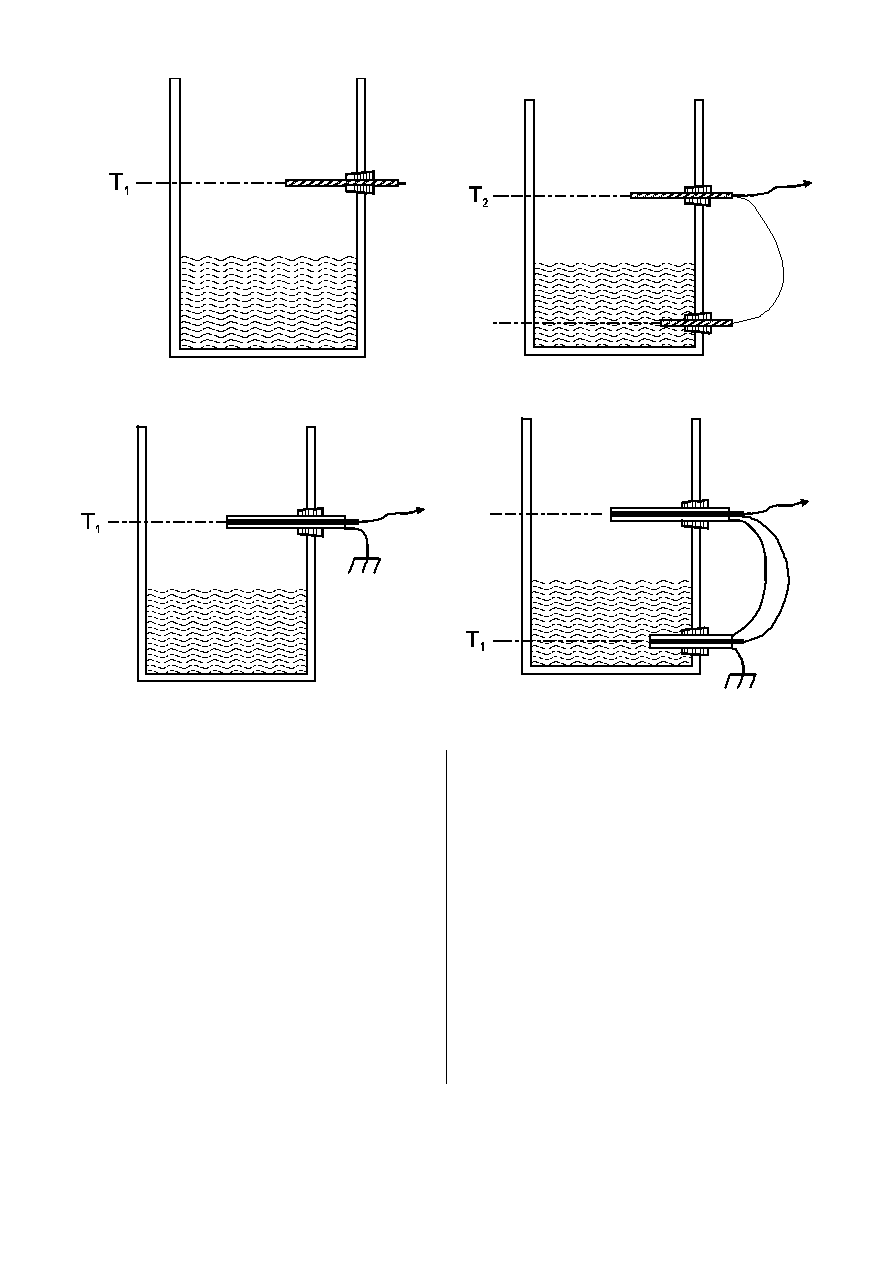- 您現(xiàn)在的位置:買賣IC網(wǎng) > PDF目錄224961 > QT114-D IC-QPROX SENSOR PDF資料下載
參數(shù)資料
| 型號(hào): | QT114-D |
| 英文描述: | IC-QPROX SENSOR |
| 中文描述: | 集成電路量研傳感器 |
| 文件頁數(shù): | 8/12頁 |
| 文件大?。?/td> | 310K |
| 代理商: | QT114-D |

2.2.6 SCALE BUILDUP
Scale buildup on internal probes, bare or insulated, is not
generally a problem since the sensor is still measuring
capacitance,
not
conductance,
and
a
reduction
in
conductivity around the probe will have minimal or no effect.
Probe designs should be tested for this to be certain in all
specific cases.
A legitimate concern with bare metal probes is the buildup of
scale or other deposits at the entry point of the probe into the
vessel. Such deposits may create a conductive surface path
(especially if the vessel is made of metal) that may lead to
false-positive trips. If the shank of the probe at the entry
point is insulated enough so that conductive bridging cannot
occur, this problem should be alleviated.
2.2.7 VISCOUS, CONDUCTIVE FILMS
Highly viscous fluids, or those having a high surface tension,
and having substantial conductivity can fool some electrode
designs into thinking that there is fluid present when there is
not. This is a particular problem with external electrodes,
where the residual films of certain types of fluids inside the
container, electrically coupled to the fluid mass below, will
create a substantial capacitive response. Internal probes are
much more resistant to this effect since the fluid surface is
guaranteed to become mechanically disconnected from the
probe when the level drops. Coating the inner vessel surface
with a smooth plastic of polyethylene or PTFE often has a
very beneficial effect on this phenomenon.
2.3 SINGLE LEVEL SENSING
When sensing for a single trip point, the single electrode can
be a simple horizontal strip on the outside of a nonmetallic
vessel (Figure 2-2), or an internal probe having a substantial
horizontal 'plateau' at the trip point (Figures 2-4, 2-5, 2-8,
2-10). When the strip or plateau is ‘covered’ with fluid the IC
will detect on at least the OUT1 line; OUT2 can be ignored.
The trip point ideally occurs at the centerline of the internal
probe or external electrode; this can be trimmed with a
potentiometer if necessary (see Section 3.2). Making the
electrode narrow and long (horizontally) will help keep the
trip point localized within a narrow band.
- 5 -
Figure 2-11 Twin-Level Coaxial Probes For
Non-Aqueous Fluids
T
2
Figure 2-10 Coaxial Probe For Non-Aqueous Fluids
Figure 2-9 Twin-Level Internal Horizontal Probes
T
1
Figure 2-8 Single Internal Horizontal Probe
相關(guān)PDF資料 |
PDF描述 |
|---|---|
| QT114-S | IC-SMD-QPROX SENSOR |
| QT12C-SERIES | Peripheral IC |
| QT12E-SERIES | Peripheral IC |
| QT12HC-SERIES | Peripheral IC |
| QT12T-SERIES | Peripheral IC |
相關(guān)代理商/技術(shù)參數(shù) |
參數(shù)描述 |
|---|---|
| QT114-DG | 制造商:Quantum Corp 功能描述:IC QPROX SENSOR DIP8 114 |
| QT114-IS | 制造商:Quantum Corp 功能描述:IC QPROX SENSOR SMD SOIC8 114 |
| QT114-ISG | 功能描述:板機(jī)接口移動(dòng)感應(yīng)器和位置傳感器 INTEGRATED-CIRCUIT RoHS:否 制造商:Panasonic Electric Works 封裝 / 箱體:TO-5 感應(yīng)距離:3 m 輸出類型:Digital 電源電壓-最大:6 V 電源電壓-最小:2.3 V 電源電流: 最大工作溫度:+ 60 C 封裝:Bulk |
| QT114R-SG | 功能描述:板機(jī)接口移動(dòng)感應(yīng)器和位置傳感器 INTEGRATED-CIRCUIT RoHS:否 制造商:Panasonic Electric Works 封裝 / 箱體:TO-5 感應(yīng)距離:3 m 輸出類型:Digital 電源電壓-最大:6 V 電源電壓-最小:2.3 V 電源電流: 最大工作溫度:+ 60 C 封裝:Bulk |
| QT114-S | 制造商:未知廠家 制造商全稱:未知廠家 功能描述:IC-SMD-QPROX SENSOR |
發(fā)布緊急采購,3分鐘左右您將得到回復(fù)。